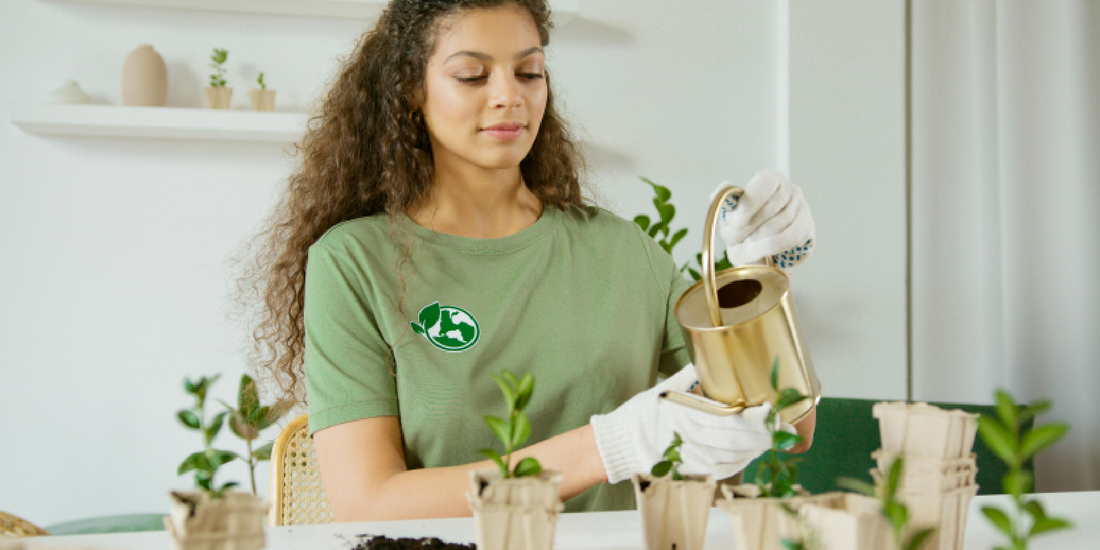
Best Light Settings for Indoor Flowering Plants
Share
A Complete Guide to Lighting Success with Your amoyls VerdantGlow Plant Shelf
Indoor gardening has bloomed into a full-fledged lifestyle, and flowering plants are leading the charge. From African violets to orchids and hibiscus, indoor blooms are not only beautiful but bring joy, life, and fragrance into your home. However, flowering plants are some of the most light-sensitive houseplants you can grow. Get it wrong, and you’ll end up with lush leaves and zero blooms. But with the right light settings—and the right setup like the amoyls VerdantGlow S-Shaped 8-Tier Plant Shelf with Grow Lights—you can enjoy thriving flowers year-round, even in a windowless room.
In this in-depth guide, we’ll explore the science behind optimal light for flowering plants, how to set up your lights for best results, and why amoyls’ full-spectrum LED system offers the ideal solution for modern indoor gardeners.
🌼 1. Why Light Matters More for Flowering Plants
While most plants require light for photosynthesis, flowering plants demand more specific light cues to trigger bud development and blooming cycles. Here’s why light settings are critical:
- Photoperiod Sensitivity: Many flowering species rely on a specific duration of light exposure (e.g., 12 hours) to trigger flowering.
- Spectrum Needs: Blooming is stimulated by certain wavelengths—red light plays a key role.
- Intensity & Direction: Inadequate brightness or poor light angles can stunt flower formation even if the plant looks healthy.
Bottom Line: Flowering plants don’t just want light—they want the right light at the right time.
💡 2. Understanding the Light Spectrum: Red, Blue, and Beyond
Plants absorb light across the Photosynthetically Active Radiation (PAR) range (400–700 nm). But not all wavelengths serve the same purpose.
-
Blue Light (400–500 nm)
Encourages vegetative growth and strong roots. Essential in early development and leafy plants. -
Red Light (600–700 nm)
Vital for flowering and fruiting. This is the spectrum that pushes plants from growth mode to bloom mode. -
Far-Red (700–750 nm)
Often used to control flowering timing in photoperiod-sensitive plants. Too much may delay flowering in short-day species. -
Full-Spectrum Grow Lights
Mimic sunlight and include all wavelengths. Ideal for mixed-plant setups and flowering.
The VerdantGlow shelf features balanced full-spectrum LEDs with enhanced red light, ideal for pushing plants into bloom.
🕒 3. Light Duration: How Long Should You Run Grow Lights?
The photoperiod (light exposure duration) is one of the most important variables to control.
-
Short-Day Plants (e.g., Chrysanthemums, Kalanchoe)
Bloom when light drops below 12 hours. Use a timer to restrict light exposure. -
Long-Day Plants (e.g., Petunias, Snapdragons)
Need 14–18 hours of light to trigger flowering. -
Day-Neutral Plants (e.g., African Violets, Geraniums)
Bloom based on maturity, but perform best with 12–14 hours of light.
✅ Amoyls Tip:
Use an automatic timer on your VerdantGlow shelf to ensure consistent photoperiods. Sudden light schedule changes can disrupt bloom cycles.
📐 4. Light Positioning: Angle, Height, and Coverage
Proper light placement can make or break your flowering efforts.
- Distance from Canopy:
- For LED grow lights: Keep 6–12 inches above flowering plants.
- Too close = leaf burn. Too far = stretching and fewer blooms.
- Angle & Coverage:
- Lights should be directly above the plant canopy for even distribution.
- The S-shaped design of the VerdantGlow shelf ensures multi-tiered, uniform lighting—especially important when growing multiple species.
- Reflective Surfaces:
- Use light-colored or reflective backdrops behind the shelf to maximize light efficiency.
🌺 5. Best Flowering Plants to Grow Indoors with Grow Lights
Some indoor flowering plants respond especially well to artificial lighting setups like the VerdantGlow system:
|
Plant |
Preferred Light Duration |
Blooming Tips |
|
African Violet |
12–14 hrs |
Keep leaves dry; rotate weekly |
|
Peace Lily |
10–12 hrs |
Avoid direct exposure to strong LEDs |
|
Geranium |
14–16 hrs |
Feed regularly with bloom fertilizer |
|
Begonia |
12–14 hrs |
Maintain high humidity |
|
Orchid (Phalaenopsis) |
12 hrs |
Indirect light, moderate intensity |
|
Kalanchoe |
10 hrs (Short-Day) |
Cover at night to block stray light |
🛠️ 6. Setting Up the amoyls VerdantGlow Shelf for Maximum Bloom
The VerdantGlow 8-tier shelf is built with both style and plant needs in mind. Here’s how to optimize your setup:
🌱 Step 1: Choose Flowering Species
Decide if you’re growing short-day or long-day bloomers. This determines your light schedule.
🧠 Step 2: Customize Each Tier
Group similar photoperiod plants together on one tier so you can manage light timing.
⏱ Step 3: Set Timers for Each Level
Use programmable timers or smart plugs to automate on/off times based on plant type.
🔄 Step 4: Rotate Plants Weekly
To ensure even growth and exposure from all angles, rotate plants every 5–7 days.
🪴 Step 5: Monitor and Adjust
Check bloom progress, leaf color, and growth patterns. Increase red light exposure if budding is delayed.
🌿 7. Common Mistakes to Avoid
Even with the best shelf and grow lights, mistakes happen. Here are the top pitfalls to watch for:
- Too Much Light: Causes leaf curl, yellowing, or scorched flowers.
- Wrong Spectrum: Using blue-heavy lights during flowering stage can delay blooming.
- Inconsistent Timing: Irregular light schedules confuse photoperiod-sensitive plants.
- Poor Airflow: Can lead to mold or pests. Use a small fan near the VerdantGlow unit.
🔍 8. Real-Life Results: amoyls Customer Bloom Stories
“My orchids have never rebloomed this consistently—VerdantGlow made it foolproof!”
— Alicia M., Brooklyn, NY
“I’m growing violets and begonias in my basement with zero windows. Constant blooms all winter!”
— Tim R., Vancouver, BC
“The multi-tier shelf lets me grow succulents on top and snapdragons below with custom light times. Genius design.”
— Jessica D., Austin, TX
🧪 9. Pro Bloom Booster: Nutrients + Light Combo
Lighting alone doesn’t bloom a plant—nutrients matter too.
- Use bloom-phase fertilizers with higher phosphorus (P) content.
- Water consistently, but avoid soggy soil.
- Combine balanced nutrition with proper light settings for explosive flowering results.
🧘 10. Blooming with Style: Let Form Meet Function
The VerdantGlow shelf isn’t just a lighting system—it’s a design statement.
- Modern S-shape fits into corners or small living spaces.
- Neutral tone shelves match any home aesthetic.
- Hidden cord management and adjustable LEDs make plant care both functional and beautiful.
When your home garden looks this good, you’ll love showing off your blooms as much as growing them.
🛍️ Conclusion: Your Blooming Success Starts with the Right Light
Whether you’re nurturing delicate orchids or bold geraniums, light is the secret weapon for continuous indoor flowering. And with the amoyls VerdantGlow S-Shaped 8-Tier Shelf, you don’t have to be a botanist to get professional-level blooms.
Set the right spectrum. Time it right. Keep it consistent. Then sit back and enjoy a home full of color, fragrance, and life—season after season.
🛒 Ready to Make Your Indoor Flowers Bloom?
Explore the amoyls VerdantGlow S-Shaped Plant Shelf with Grow Lights and create your blooming paradise today.
